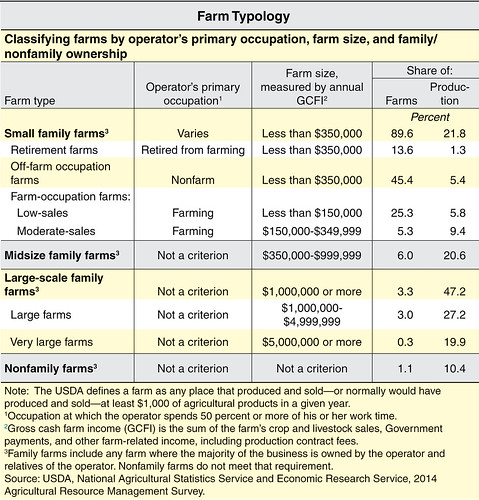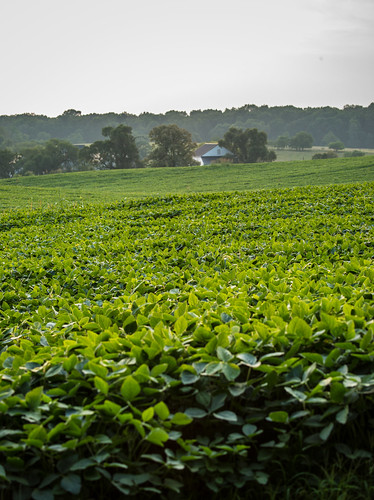
Describing the structure of the U.S. farm sector is challenging because farms vary widely in size and other characteristics. Are they largely family businesses, or corporate operations? U.S. farms range from very small retirement and residential holdings to businesses with sales in the millions of dollars.
To better understand U.S. agriculture, USDA’s Economic Research Service (ERS) recently released America’s Diverse Family Farms. The report categorizes farms into homogenous groupings based on the annual revenue of the farm, primary occupation of the principal operator, and family/nonfamily ownership of the farm.
Our research reveals that family farms remain an essential feature of agriculture in the United States. Family farms of different types together account for 99 percent of farms and 90 percent of production. Most farms in United States are small, and these small family farms operate nearly half of U.S. farmland, while accounting for only 22 percent of production. Midsize and large-scale family farms account for 68 percent of production; and nonfamily farms account for the remaining farms (1 percent) and production (10 percent).
Different types of farms account for the production of specific commodities. Small farms produce the majority of U.S. poultry (mostly under production contracts) and hay. Midsize and large-scale family farms combine to dominate cotton, cash grains/soybeans, and hogs. Large-scale family farms account for three-fourths of dairy production. Finally, large-scale family farms and nonfamily farms combine to dominate beef and high-value crops like fruits and vegetables.
More than a third of all farms have multiple operators, and larger farms are more likely to have multiple generations of farm operators. Multiple-generation enterprises are most common among large-scale family farms and nonfamily farms (18-21 percent).
Farm operators tend to be older than other self-employed workers. Thirty-three percent of principal farm operators were at least 65 years old in 2014, compared with only 12 percent of self-employed workers in nonagricultural businesses. Retirement farms had the highest percentage of older operators (67 percent), followed by low-sales farms (41 percent) and moderate-sales farms (28 percent). In the remaining groups, however, only about one-fifth of the operators were 65 years old or older. The advanced age of farm operators is understandable, given that the farm is the home for most farmers and farmers can retire gradually.
Farm households in general are neither low-income nor low-wealth. For each type of farm household, both median income and median wealth are above corresponding medians for all U.S. households. However, it is important to note that operators of small farms—especially retirement, off-farm occupation, and low-sales farms—frequently report losses from farming. These farm households often use off-farm income to cover farm expenses and fund their farm operations.
Few U.S. industries are as dominated by family businesses as agriculture. Small family farms dominate the farm count while midsize and large-scale family farms dominate production. America’s Diverse Family Farms reveals that, for now and for the foreseeable future, families are central to our agricultural economy.


